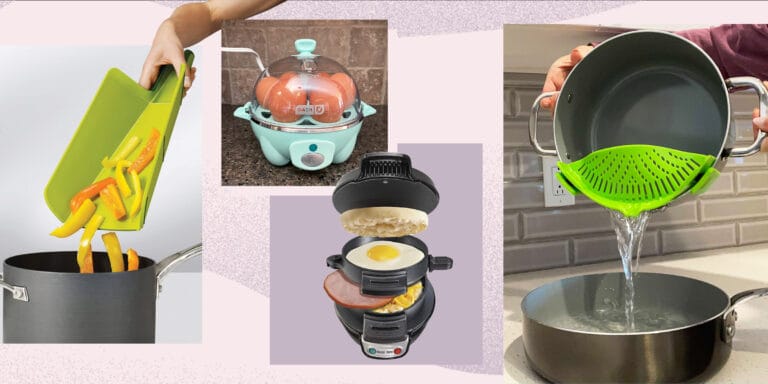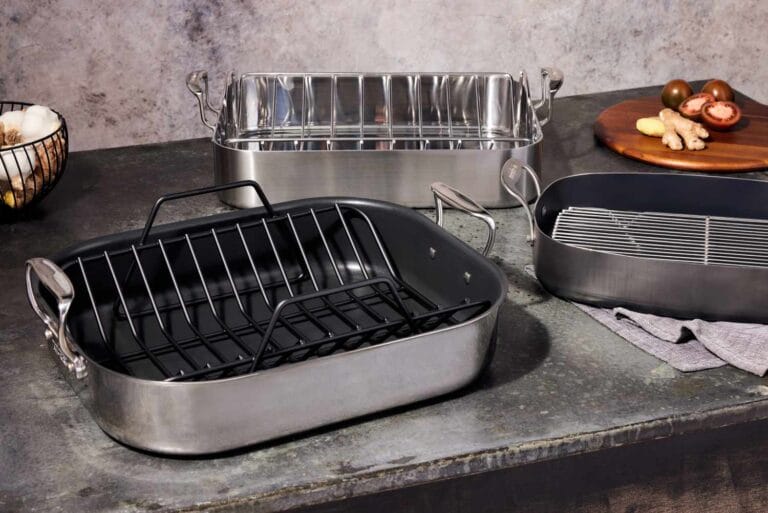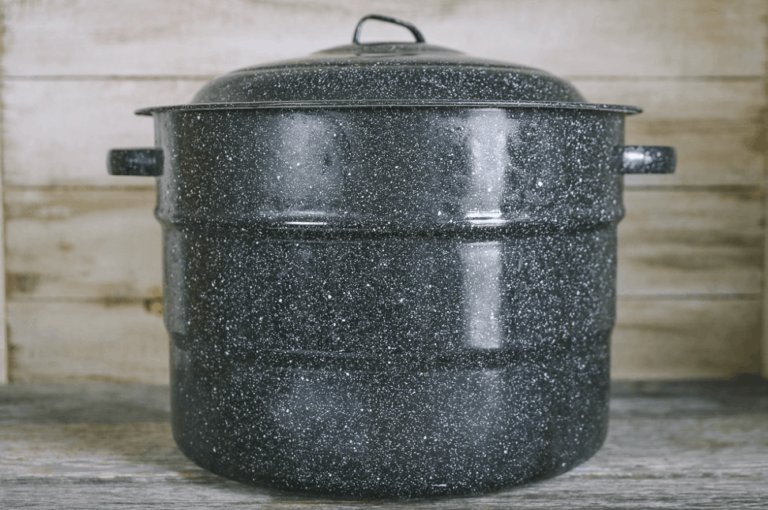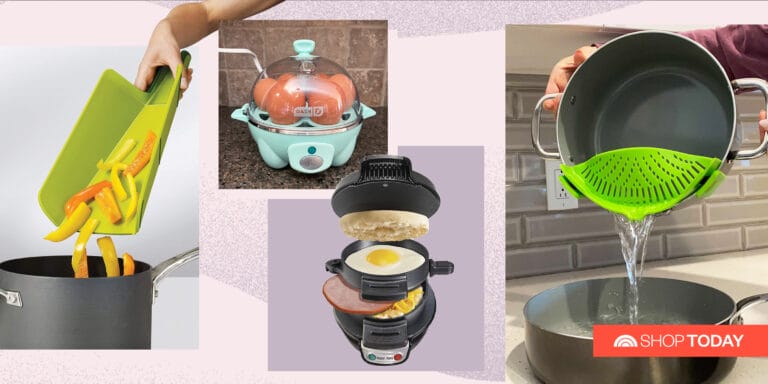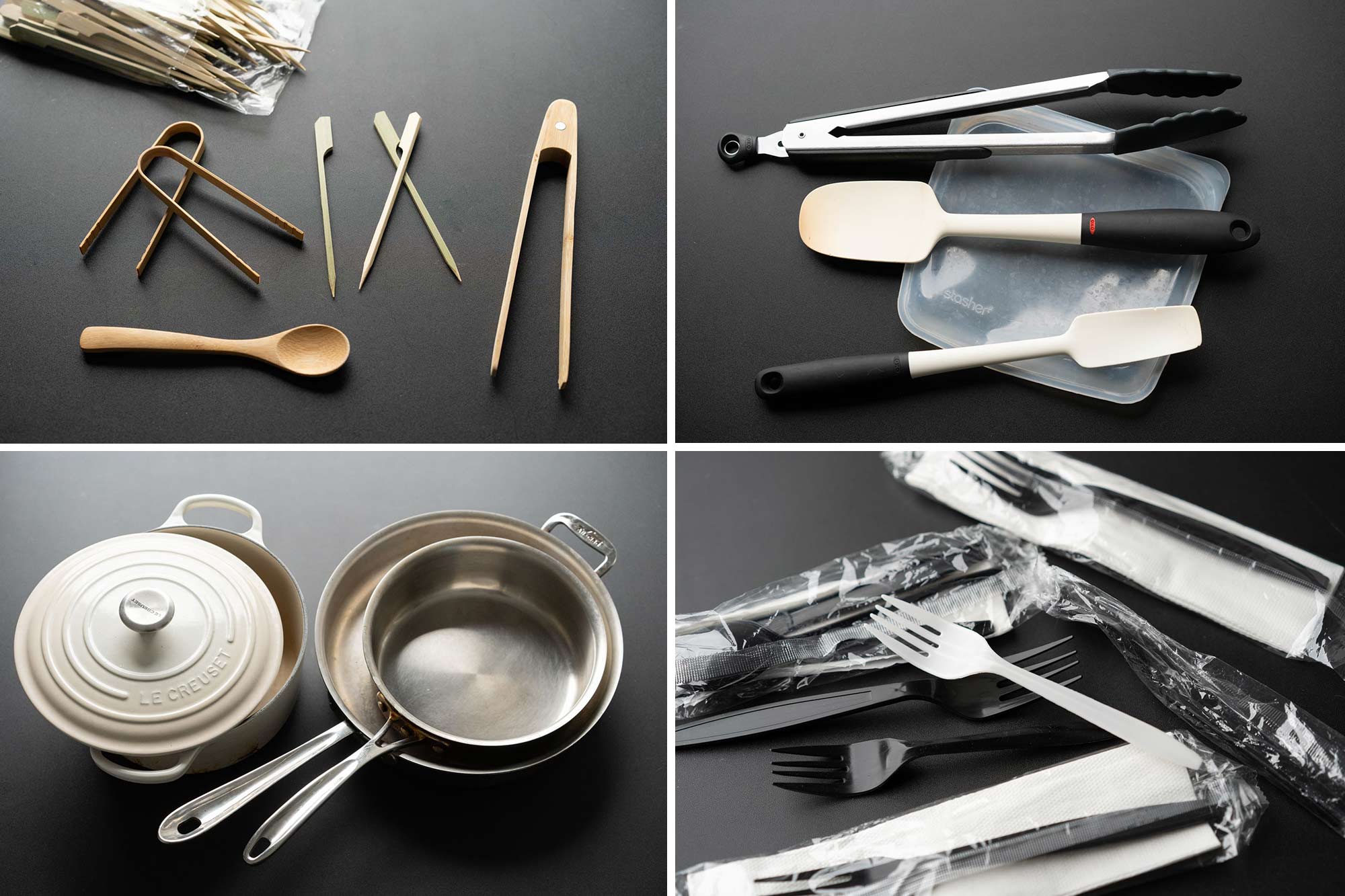
Picture this: you’re whipping up a delicious meal in your kitchen, using your favorite non-stick cookware. But suddenly, you realize that your trusty utensils might be damaging the coating on your pans. What a nightmare! But fear not, because I’ve got the perfect solution for you: non-stick safe utensils for preserving your precious cookware.
When it comes to maintaining the longevity of your non-stick pans, choosing the right utensils is crucial. But with so many options out there, it can be a bit overwhelming.
That’s where I come in! In this article, I’ll guide you through the world of non-stick-safe utensils, helping you make informed decisions to protect your cookware investment.
Say goodbye to scratching, scraping, and worrying about harming your non-stick coating. With the right utensils, you can effortlessly flip, stir, and sauté your way to culinary perfection while keeping your cookware in pristine condition. So let’s dive in and explore the wonderful world of non-stick safe utensils together!
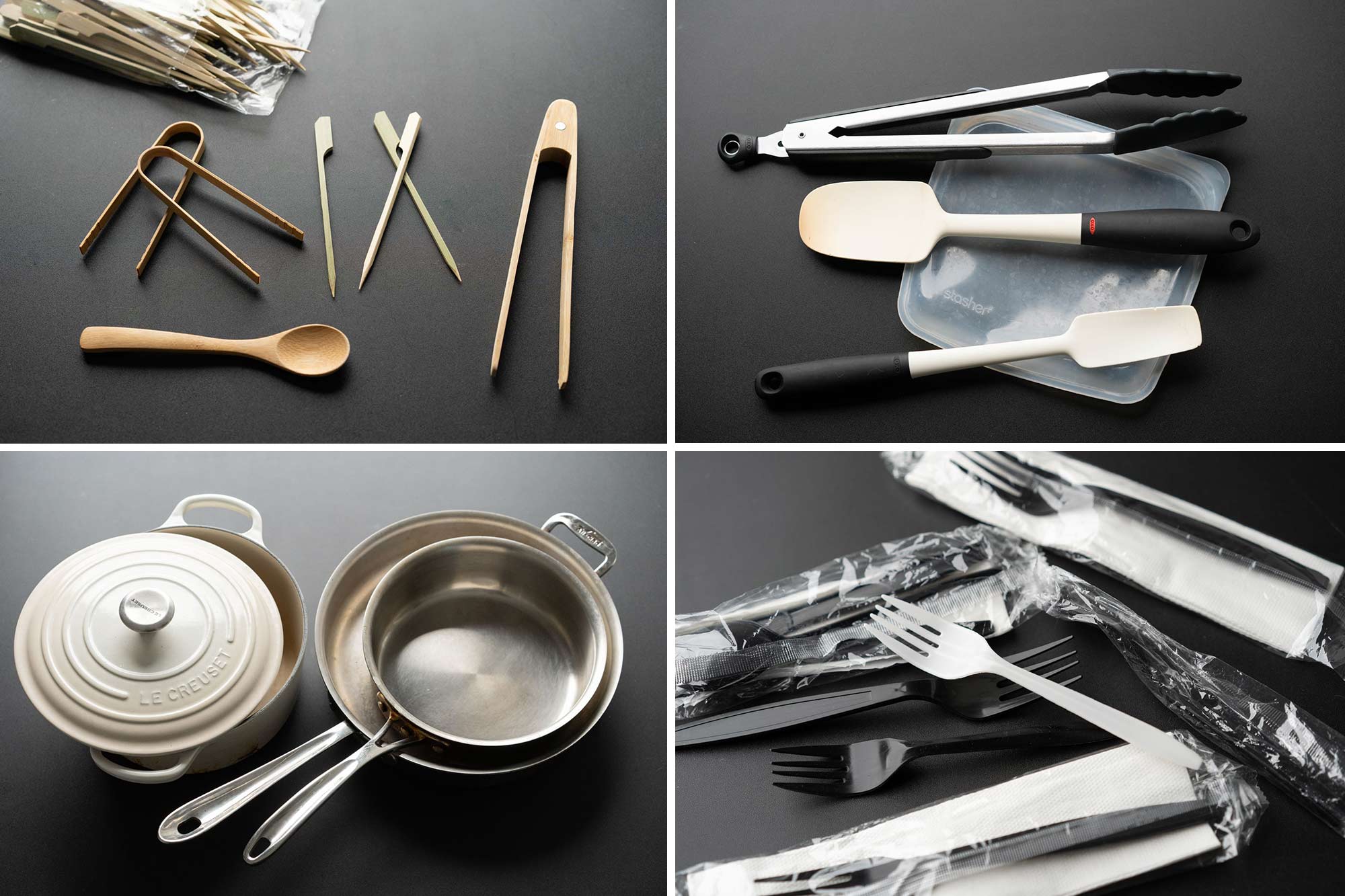
Non-stick Safe Utensils for Preserving Cookware: The Key to Long-lasting Kitchen Equipment
When it comes to preserving your cookware, it’s important to use non-stick-safe utensils that won’t damage the surface. These utensils are designed to protect your non-stick cookware while still allowing you to cook and stir your favorite dishes.
Look for utensils made from nylon, silicone, or wood, as these materials are gentle on non-stick coatings. Make sure to avoid metal utensils that can scratch and ruin the non-stick surface. With the right utensils, you can enjoy your non-stick cookware for years to come!
In this article, we will explore the importance of using the right utensils, the types of non-stick-safe utensils available, and tips for maintaining your cookware’s longevity.
The Importance of Non-stick Safe Utensils
When it comes to non-stick cookware, using the wrong utensils can be detrimental. Metal utensils, such as stainless steel or aluminum, can scratch the coating of your non-stick pans, causing them to lose their non-stick properties over time.
These scratches not only make it difficult to cook without food sticking to the surface, but they can also expose the underlying metal, which can react with acidic or alkaline ingredients and compromise the taste and safety of your food.
To preserve the integrity of your non-stick cookware, it’s essential to opt for utensils that are specifically designed for use with non-stick surfaces.
These utensils are typically coated with materials like silicone, nylon, or wood, which are gentle on the non-stick coating, preventing scratches and damage. By using non-stick-safe utensils, you can ensure that your cookware remains functional and safe for cooking a variety of dishes.
Types of Non-stick Safe Utensils
1. Silicone Utensils: Silicone utensils are a popular choice for non-stick cookware due to their heat resistance and gentle touch.
They are great for flipping delicate foods like eggs and pancakes without scratching the surface. Silicone spatulas, turners, and tongs are commonly available and come in various sizes and designs to suit your cooking needs.
2. Nylon Utensils: Nylon utensils are another excellent option for non-stick cookware. They are lightweight, durable, and resistant to heat.
Nylon spatulas, spoons, and whisks are gentle on the non-stick coating and can handle a wide range of cooking tasks. Look for nylon utensils with a reinforced core for added strength and longevity.
3. Wooden Utensils: Wooden utensils have been used in kitchens for centuries and are still a reliable choice for non-stick cookware.
They are gentle, heat-resistant, and do not scratch the surface of your pans. Wooden spoons, spatulas, and ladles are ideal for mixing, stirring, and sautéing.
It’s important to note that while non-stick-safe utensils are designed to be gentle on your cookware, they may not always provide the same precision and control as metal utensils. It’s best to choose the right tool for each task to ensure efficient and safe cooking.
Tips for Maintaining Cookware Longevity
1. Hand-washing: To prolong the lifespan of your non-stick cookware, avoid using the dishwasher. Hand washing with mild dish soap and a soft sponge or cloth is the best way to clean them. Harsh detergents and abrasive scrubbers can cause damage to the non-stick coating.
2. Avoid High Heat: Exposing non-stick cookware to high heat can damage the non-stick coating. Always cook at medium to low heat settings to prevent overheating. Using non-stick safe utensils with high heat resistance will also help prevent accidental melting or warping.
3. Store with Care: When storing your non-stick cookware, avoid stacking heavy items on top to prevent scratches and dents. Consider using cookware protectors or placing a soft cloth between each piece to minimize contact and potential damage.
4. Use Wooden or Silicone Tools: As mentioned earlier, opt for non-stick-safe utensils such as wooden or silicone tools to prevent scratching the surface of your cookware. Avoid using metal utensils at all costs.
5. Regularly Inspect Coating: Over time, the non-stick coating on your cookware may wear off or show signs of damage. Regularly inspect your cookware for any signs of peeling, chipping, or scratches. If the non-stick coating is compromised, it’s time to replace the cookware to ensure safe and efficient cooking.
By using non-stick-safe utensils and following these maintenance tips, you can extend the life of your non-stick cookware and enjoy hassle-free cooking for years to come.
Remember, investing in high-quality utensils and proper care will pay off in the long run, both in terms of preserving your cookware and enhancing your cooking experience.
So, grab your non-stick-safe utensils and start exploring the world of culinary possibilities without the fear of damaging your cookware.
Frequently Asked Questions
Welcome to our FAQ section on non-stick-safe utensils for preserving cookware! Here, we’ll address common questions related to using the right utensils to protect your non-stick cookware and maintain its longevity.
Whether you’re a seasoned chef or a beginner in the kitchen, we have the answers you need to keep your cookware in top shape.
1. What types of utensils are safe to use with non-stick cookware?
When it comes to non-stick cookware, it’s important to choose utensils that won’t scratch or damage the coating. Opt for utensils made of silicone, nylon, or wood as they are gentle on the non-stick surface. These materials are also heat-resistant, so you can safely use them while cooking at high temperatures.
Avoid using metal utensils such as stainless steel or aluminum as their hardness can scratch the non-stick coating. These scratches can compromise the non-stick properties of your cookware over time.
2. Can I use metal utensils on non-stick cookware if they have a protective coating?
While some manufacturers claim to have metal utensils with a protective coating that can be used on non-stick cookware, it is generally advisable to avoid using metal utensils altogether. Even with a protective coating, there is still a risk of scratching the non-stick surface.
To ensure the longevity of your non-stick cookware, it’s best to stick to utensils made of silicone, nylon, or wood. These materials are specifically designed to be non-abrasive and gentle on non-stick coatings, providing a safer cooking experience.
3. What should I look for when buying utensils for non-stick cookware?
When purchasing utensils for non-stick cookware, consider the material and design. Look for utensils made of silicone, nylon, or wood, as these are non-abrasive and won’t scratch the coating. Opt for utensils with smooth edges and rounded corners as they further minimize the risk of damaging the non-stick surface.
Additionally, make sure the utensils are heat-resistant and can withstand high temperatures. This will allow you to use them for various cooking methods without any concerns. Lastly, check that the utensils have a comfortable handle grip for easy and safe handling while you cook.
4. How do I properly care for non-stick-safe utensils?
To ensure the longevity of your non-stick-safe utensils, it’s important to follow proper care instructions. After each use, wash them with warm, soapy water using a gentle sponge or cloth. Avoid using abrasive scrubbers or harsh cleaning products as they can damage the utensils.
If the utensils are dishwasher-safe, place them on the top rack to prevent any potential damage. Store them in a utensil holder or drawer to keep them organized and prevent any bending or warping. Regularly inspect the utensils for any signs of wear and tear, and replace them if needed.
5. Can I use non-stick-safe utensils on other types of cookware?
Absolutely! Non-stick-safe utensils are versatile and can be used on various types of cookware. They are particularly beneficial for stainless steel and cast iron pans, as they help prevent scratching and preserve the cookware’s surface. You can also use them on ceramic, glass, and enamel cookware.
Non-stick-safe utensils are designed with the purpose of being gentle on different types of cookware surfaces. So, whether you’re cooking with non-stick, stainless steel, or other types of cookware, these utensils are a reliable choice.
Are you worried about your non-stick cookware getting scratched? Don’t fret! There are plenty of safe utensil options for preserving your pots and pans. Look for silicone, nylon, or wooden utensils that won’t damage the non-stick coating.
These utensils are easy to use, easy to clean, and will help your cookware last longer. So, go ahead and whip up your favorite recipes without worrying about ruining your non-stick pans!
Furthermore, it’s important to remember a few key tips when using non-stick utensils. Avoid using metal utensils that can scratch the surface.
Always hand wash your utensils to maintain their integrity. And don’t forget to replace any worn or damaged utensils to ensure the safety of your cookware. By following these simple guidelines, you can enjoy your non-stick cookware for years to come!

